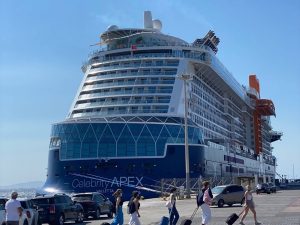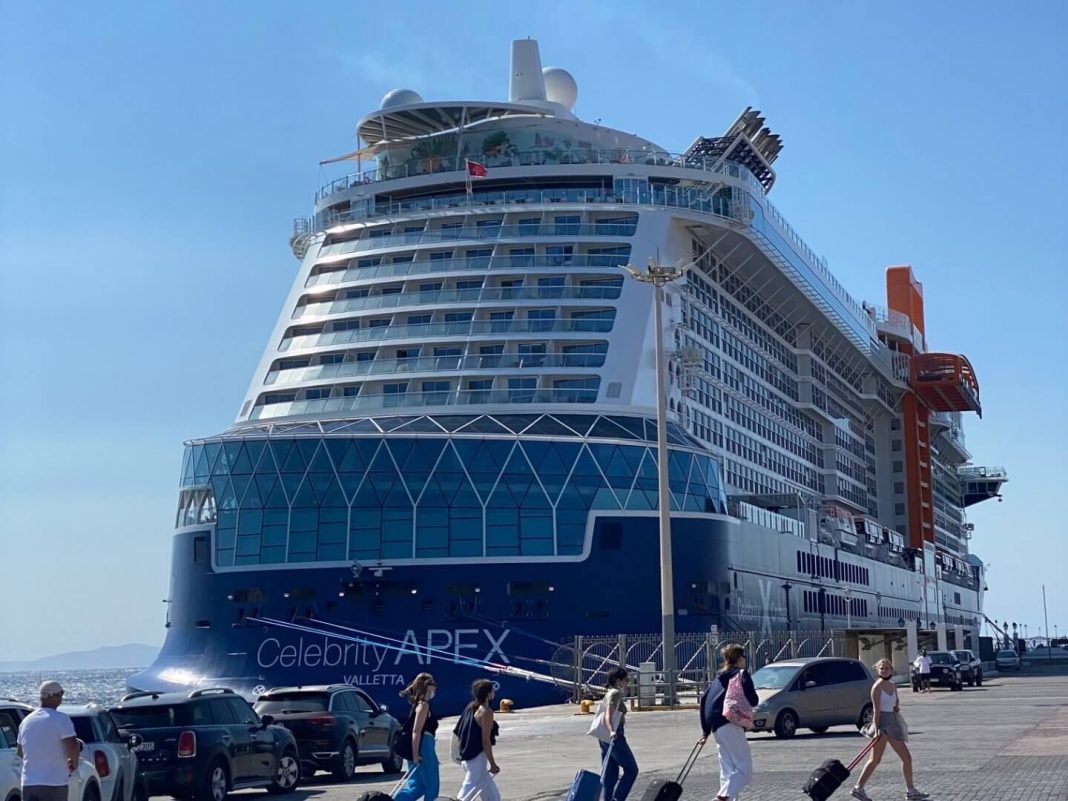How Over-Tourism Hit This Summer
by Llewellyn King, Washington
Europe reeled this summer from heat, wildfires, migrants and worries about Russia’s war in Ukraine, and too much tourism. I know; I was part of the problem.
Tourism is the quick economic fix for poor nations, but it is also vital to rich ones — until both get too much of it.

The places everyone wants to visit, often places on bucket lists, are choking on their success. Paris, Britain’s Stonehenge and the Lake District, Ireland’s Ring of Kerry, and the jewels of Italy — Florence and Venice — all suffer summer overload.
This summer things were so bad in Venice that cruise ships had to be waved off. The Greek islands of Santorini, Corfu and Mykonos were, likewise, inundated with cruisers and other tourists.
Yet tourism is vital to many economies. The emerging tourist destinations along Croatia’s Dalmatian Coast are the latest to feel the benefits and problems of tourism. The sites, the roads and the facilities are stretched, but tourism has meant economic well-being for the region, especially as cruise ships have started calling.
Cruise ships, those big — and progressively gigantic — floating palaces overwhelm ports when they anchor, burden infrastructure and deposit lots of lovely money.
Greece and many countries along the Adriatic derive about 25 percent of their GDP from tourism, not the least from cruise ships.  If it’s Wednesday then it’s probably Athens
If it’s Wednesday then it’s probably Athens
Cruise ships are very important to any shore community with ancient ruins, historical and scenic cities, and natural wonders — and the Balkan countries have all in abundance.
In early August, my wife and I cruised the Dalmatian Coast and Greek islands. When we booked the cruise, at the last minute, we were fully aware of the tourist pressure on Europe every summer, but we learned that it is getting worse.
Most of the Dalmatian Coast is still visitable in summer and hugely rewarding, except for Dubrovnik, which we skipped. It is, I learned, showing stress from over-tourism. The full effect of the cruise ships hasn’t yet begun to wear on the small coastal towns as on the most famous Greek islands.
You can’t pick a Greek islands itinerary in the summer that will avoid seeing too many cruise ships carrying 2,500 and up passengers, arriving at the same destination at the same time.

Fira on Santorini is a fabulous cliff town, except when there are too many visitors going ashore from a flotilla of cruise ships anchored in the harbour.
Five cruise ships arrived at Fira simultaneously, ours among them, and untold thousands of tourists went ashore. You must ride a donkey or a cable car to reach the charming town. My wife and I love donkeys, so we opted for the cable car. It was chaotic, verging on dangerous. Extraordinarily, the crowds waiting hours to board the cable cars were well-behaved: no pushing, no audible outrage, just resigned queuing.
Lest you think cruise ships are filled only with Americans, cruising has become a global passion.
Cruisers see the world from the comfort and security of a huge, well-organized hotel that moves with them. They see so much more and take their selfies in many more places than they could otherwise.
Cruising is big business, and the size of the ship seems not to deter anyone.
Royal Caribbean is about to add its Icon class: they will carry well over 7,000 passengers and 3,000 crew. To merchants and tax collectors, they are golden galleons as the visitors spend their doubloons on tours, trinkets, meals, and tips.
But over-tourism degrades the picturesque ports, cherished villages and great structures of the past. When I see a cruise ship towering over a town from where history was born, I think: The barbarians arrive in shorts, clutching cameras and cell phones. I may be one of them, but I shall endeavor to avoid high summer in the future.
On Twitter: @llewellynking2
EAJ veteran Llewellyn King is executive producer and host of “White House Chronicle” on PBS.
Read this column on: White House Chronicle InsideSources


